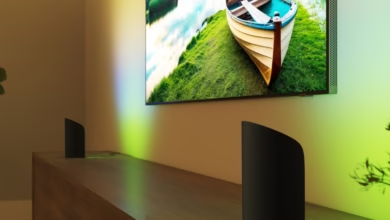Top 9 Smart Shades & Blinds for 2025 (Tested & Reviewed)

▼ Summary
– Tailor-made shades provide a better fit and appearance than off-the-shelf options, though they are more expensive.
– Accurate measuring is crucial to avoid gaps or ill-fitting shades, especially for inside mounts, while outside mounts are easier but less sleek.
– Inside-mounted shades offer a cleaner look but have light gaps, whereas outside mounts block more light and are simpler to install.
– Material choice affects functionality (light control, privacy, heat/noise reduction), and valances can enhance aesthetics.
– Smart shades require power (rechargeable batteries, solar panels) and connectivity (hub, Wi-Fi/Zigbee) for automation features like timed or sensor-triggered operation.
Finding the perfect window treatments involves balancing aesthetics, functionality, and smart technology. Whether you’re upgrading for style or convenience, choosing between custom-made and ready-to-fit options makes a significant difference. While standard sizes work for some, most windows benefit from tailored shades, though the precision comes at a higher cost.
Accuracy is non-negotiable when measuring for shades. Manufacturers provide detailed guides, but double-checking (or triple-checking) ensures a flawless fit. Enlist a second pair of eyes to verify dimensions, especially for inside mounts where even minor errors create gaps. Outside mounts offer more flexibility but sacrifice the streamlined look of recessed installations.
Mounting location impacts both appearance and performance. Inside mounts deliver a polished finish but require careful planning around obstructions like handles. Outside mounts simplify installation and enhance light blockage, though they lack the seamless integration of their counterparts. For total darkness, layering shades with blackout curtains remains unbeatable.
Material choice dictates both style and practicality. Light-filtering fabrics maintain privacy while brightening rooms, whereas heavier textiles improve insulation and noise reduction. Valances add a finishing touch, concealing hardware for a cleaner aesthetic, though they often come as optional extras.
Power sources vary across smart shades. Rechargeable batteries dominate the market, with some models supporting solar panels or standard disposable cells. Always charge fully before installation, especially if outlets aren’t nearby. For hassle-free operation, rechargeable options outperform single-use batteries long-term.
Connectivity transforms shades into smart devices. While remotes offer basic control, integrating with a hub unlocks voice commands and app-based adjustments. Compatibility with existing smart home ecosystems, like Alexa or Google Home, is crucial. Bluetooth may suffice for simple setups, but Wi-Fi or Zigbee ensures reliable, far-reaching performance.
Automation elevates convenience to new heights. Beyond scheduled openings, advanced systems sync with environmental cues like sunlight or room temperature. Motion sensors can trigger shades at dawn, while thermostats might lower them during peak heat. For intricate routines, supplementary gadgets may be necessary, but the payoff in daily ease is undeniable.
The right blend of design and tech creates a seamless living experience. Prioritize fit, functionality, and future-proof features to make the most of your investment. With careful planning, smart shades become more than window dressings, they’re an integral part of a modern, efficient home.
(Source: Wired)
